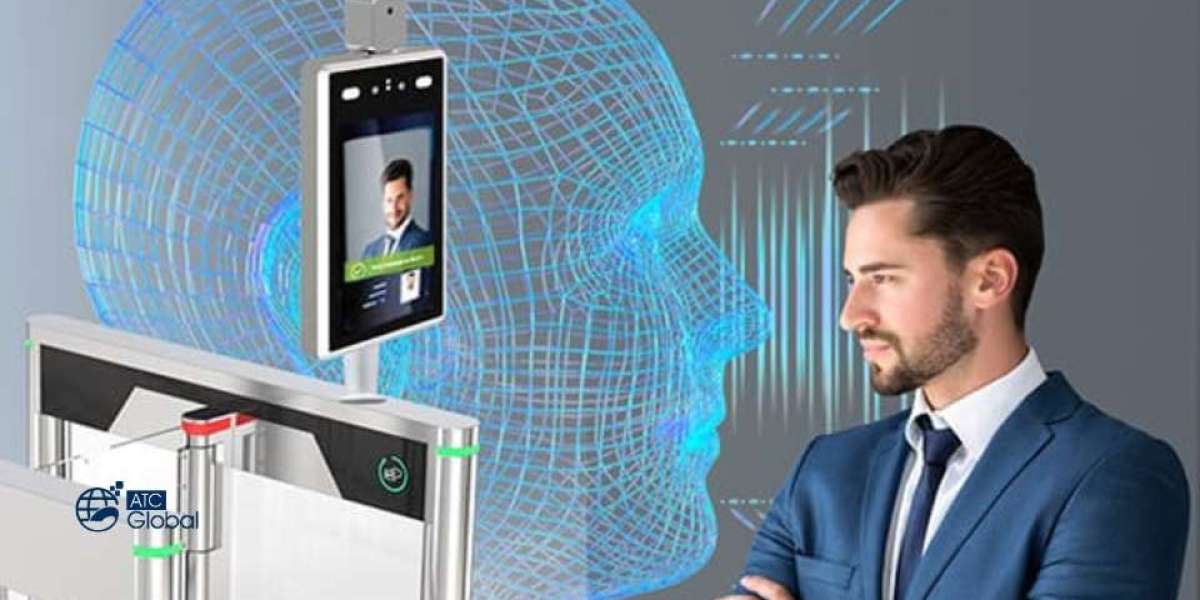In today’s security-conscious world, courts and legal institutions face unique challenges in managing access control while ensuring safety and efficiency. Biometric turnstiles offer a cutting-edge solution to address these concerns by providing secure, streamlined entry for personnel and visitors. In this guide, we’ll explore the benefits, considerations, and implementation of biometric turnstiles for courts, empowering judicial facilities to enhance security, streamline operations, and protect sensitive information.
Understanding Biometric Turnstiles
1. What are Biometric Turnstiles?
Biometric turnstiles are advanced access control systems that use biometric authentication methods, such as fingerprint, facial recognition, or iris scanning, to verify the identity of individuals seeking entry. Integrated with turnstile barriers, these systems allow authorized personnel to pass through while denying access to unauthorized individuals.
2. Key Components of Biometric Turnstiles
Biometric turnstiles typically consist of the following components:
- Biometric Readers: These devices capture and analyze biometric data, such as fingerprints, facial features, or iris patterns, to verify the identity of individuals.
- Turnstile Barriers: Turnstile barriers control access to entry points, allowing authorized personnel to pass through while preventing unauthorized entry.
- Access Control Software: Access control software manages user permissions, stores biometric data, and logs entry and exit events for auditing and reporting purposes.
Benefits of Biometric Turnstiles for Courts
1. Enhanced Security
Biometric turnstiles offer a high level of security by using unique biological characteristics to verify the identity of individuals. This reduces the risk of unauthorized access, identity fraud, and security breaches, ensuring that only authorized personnel and visitors gain entry to the court premises.
2. Improved Access Control
By integrating biometric authentication with turnstile barriers, courts can implement strict access control measures to regulate the flow of personnel and visitors. This helps prevent unauthorized entry to restricted areas, such as courtrooms, judge chambers, and evidence rooms, while allowing authorized personnel to move freely within the facility.
3. Streamlined Operations
Biometric turnstiles streamline entry and exit procedures, reducing wait times and congestion at entry points. By automating the authentication process, these systems enable rapid and efficient access for personnel and visitors, enhancing the overall efficiency of court operations.
4. Accountability and Auditability
Biometric turnstiles provide a comprehensive audit trail of entry and exit events, including timestamps, user identities, and access permissions. This enables courts to maintain accountability, track employee attendance, and generate detailed reports for compliance and auditing purposes.
Considerations for Implementing Biometric Turnstiles
1. Privacy and Data Security
Courts must prioritize privacy and data security when implementing biometric turnstiles, ensuring compliance with applicable regulations, such as GDPR or HIPAA. Measures should be in place to protect biometric data from unauthorized access, misuse, or theft, and individuals’ consent should be obtained for biometric data collection and processing.
2. Integration with Existing Systems
Biometric turnstiles should seamlessly integrate with existing access control systems, security infrastructure, and building management systems within the court facility. Compatibility with access control software, surveillance cameras, and alarm systems is essential to ensure seamless operation and interoperability.
3. User Training and Education
Court personnel and visitors should receive adequate training and education on the use of biometric turnstiles, including enrollment procedures, authentication processes, and privacy considerations. Clear instructions, signage, and user support services should be provided to facilitate smooth adoption and minimize user errors.
Implementation Guidelines for Courts
1. Conduct a Security Assessment
Begin by conducting a thorough security assessment of the court facility to identify vulnerabilities, access control requirements, and areas for improvement. Determine the locations and entry points where biometric turnstiles will be installed based on security priorities and operational needs.
2. Choose the Right Biometric Technology
Select biometric technologies that are well-suited to the unique requirements and environment of the court facility. Consider factors such as accuracy, reliability, scalability, and user acceptance when choosing fingerprint, facial recognition, or iris scanning solutions.
3. Develop a Deployment Plan
Develop a detailed deployment plan for the installation and implementation of biometric turnstiles, including timelines, budget allocations, and resource requirements. Coordinate with relevant stakeholders, including IT personnel, security staff, and facilities management, to ensure a smooth and successful deployment process.
4. Provide Training and Support
Offer comprehensive training and support to court personnel and visitors on the use of biometric turnstiles. Conduct orientation sessions, hands-on training workshops, and user awareness campaigns to promote understanding, acceptance, and compliance with biometric security measures.
Conclusion:
In conclusion, biometric turnstiles offer a powerful solution for courts to enhance security, streamline operations, and protect sensitive information. By leveraging advanced biometric authentication technology, courts can implement robust access control measures to regulate entry, prevent unauthorized access, and maintain accountability. However, successful implementation requires careful consideration of privacy, integration, and user education. With proper planning, deployment, and support, biometric turnstiles can become an invaluable asset in safeguarding court facilities and ensuring the safety and integrity of the judicial process.



